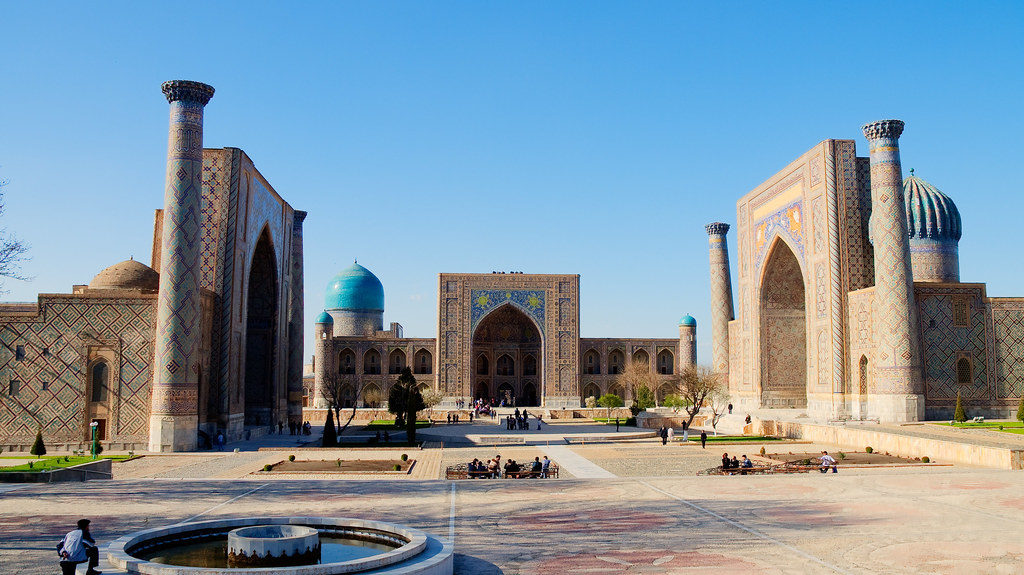
Samarkand, Rajasthan, Uzbekistan, holds a landscape filled with tones of blue and light brown. Clear skies and bright turquoise domes reign the skyline while relaxing lush gardens surround every square. Around, large bazaars fill your senses with smells of different kinds of nuts, fruits, and spices. However, nothing compares to the awe-inspiring structures that make you feel as small as an ant. Walking inside these huge madrasas is truly breathtaking, with endless details telling Samarkand’s history.
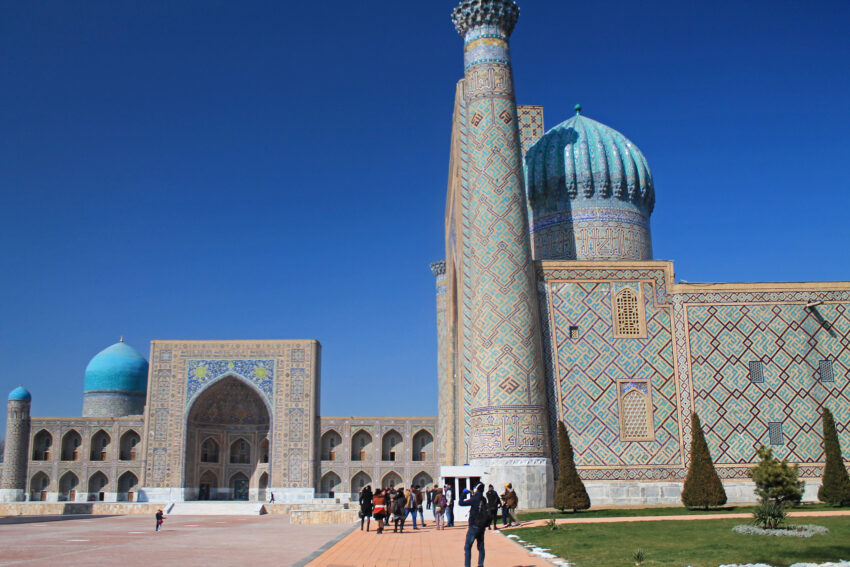
Activity/Place Highlights
The Registan
Now, your first stop in Samarkand is the Registan, one of the most iconic squares you could visit in Uzbekistan and Asia. As soon as you reach the square, you will spot three big madrasas facing each other; Ulug Beg, Sher-Dor, and Tilya Kori. Formerly, these structures used to function as Islam colleges where young men learned about religion and science. Therefore, you can imagine all these boys walking down the halls as you look up to the second floor, where they used to live and study.
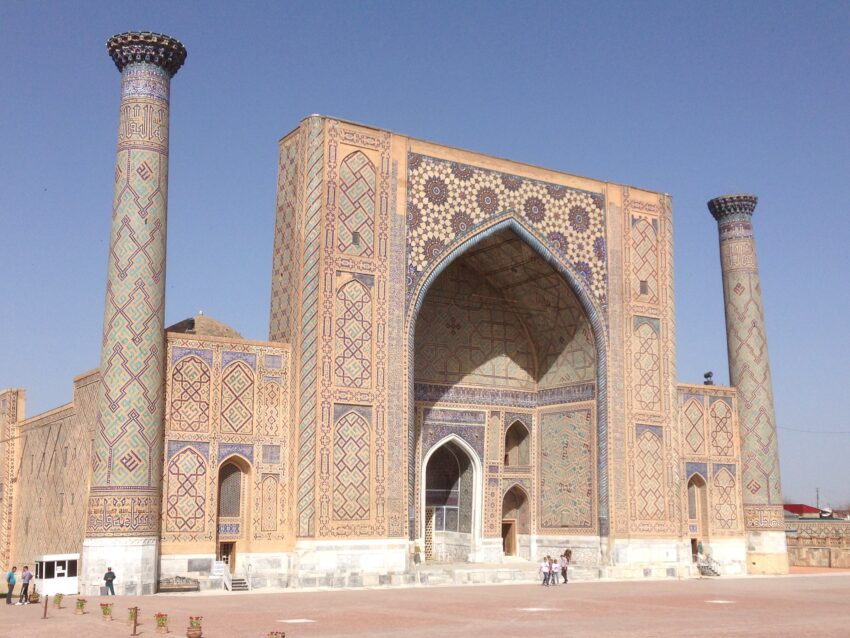
Source by G Travels on Flickr – Under Creative Commons license
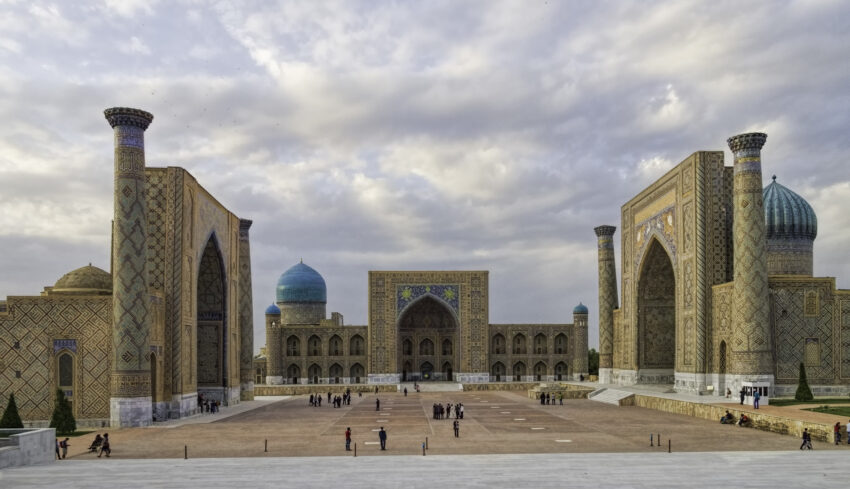
Source by Dan Lundberg on Flickr – Under Creative Commons license
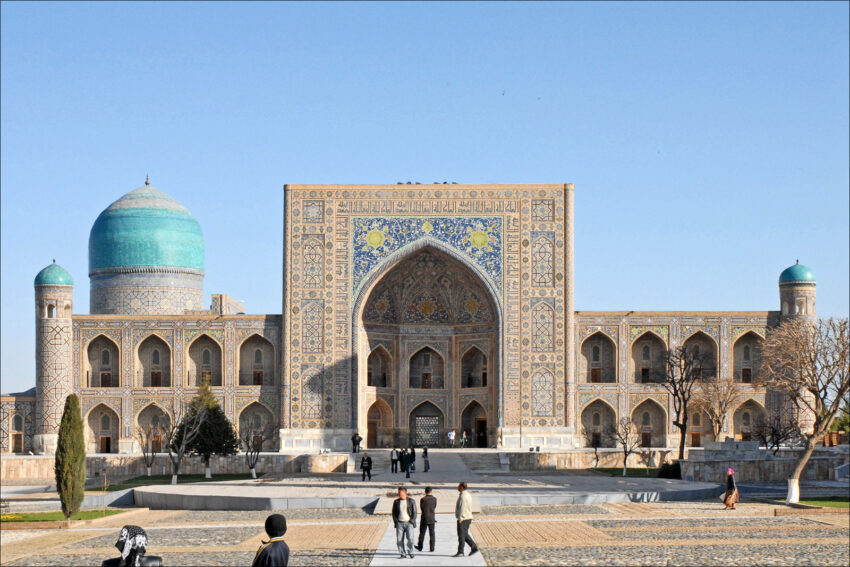
Source by Jean-Pierre Dalbéra on Flickr – Under Creative Commons license
As you go into the madrasas, you’ll find striking courtyards decorated with colorful tiles filled with blues, browns, and greens. Despite their anti-Islam sentiment, the Soviets were the ones who decided to reconstruct the Registan after they took over the city since it had been destroyed by several earthquakes. As a result, they are responsible for the current minarets standing on both sides of two of the madrasas. Likewise, they are the ones to thank for the famous turquoise domes that make you think of the refreshing water the area lacks.
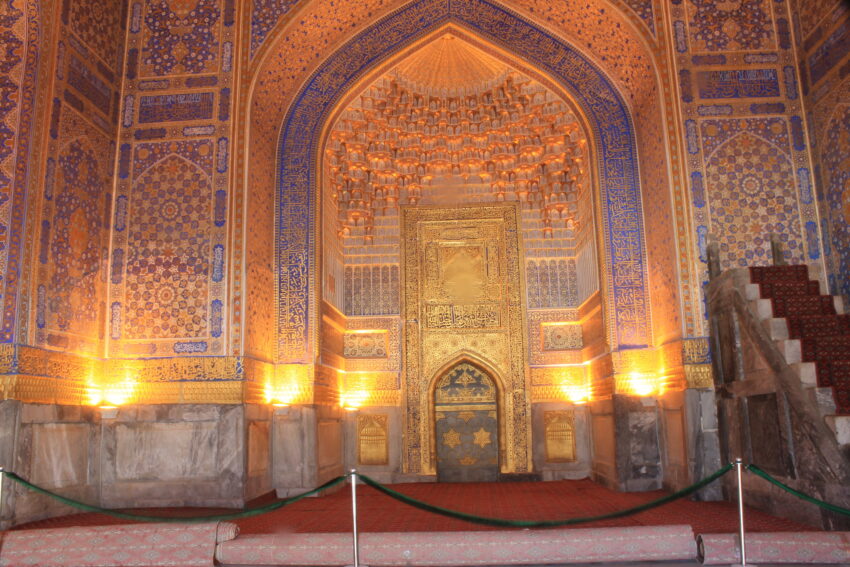
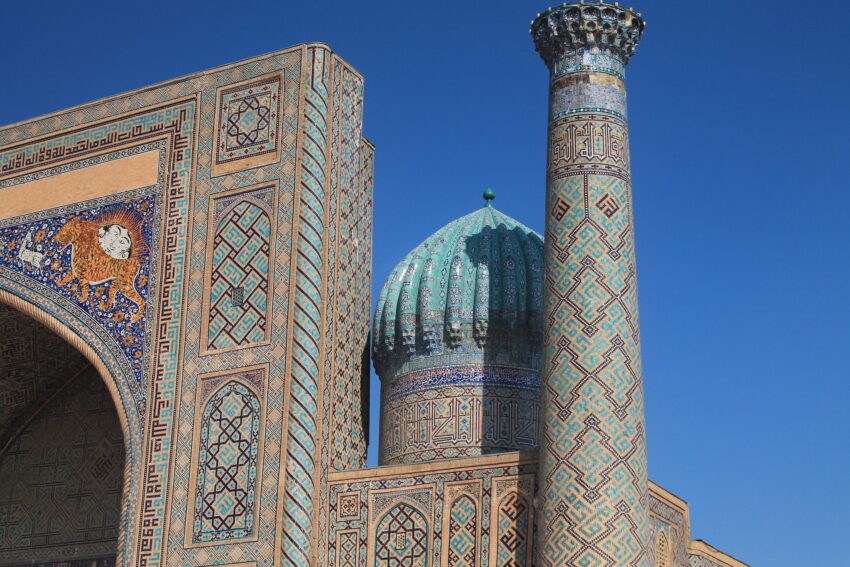
The Artistic Structures of Samarkand
If you pay attention to the intricate decoration of the structures, you can find mesmerizing symmetrical patterns, as well as complex quotations from the Koran. Even though the Islam forbids the representation of living creatures in religious buildings, you’ll notice two tigers facing each other, with rising suns on their backs. Besides, on the top of the Sher-Dor Madrasah, you can see human faces.
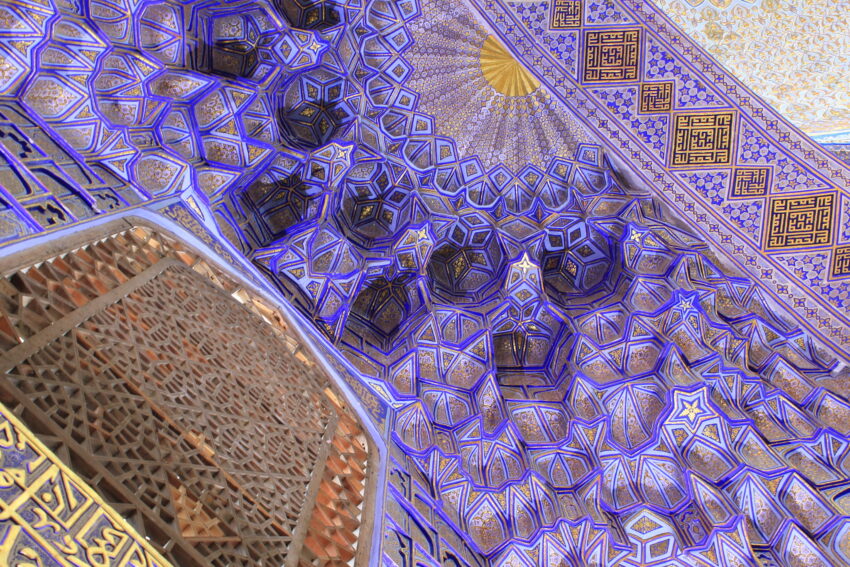
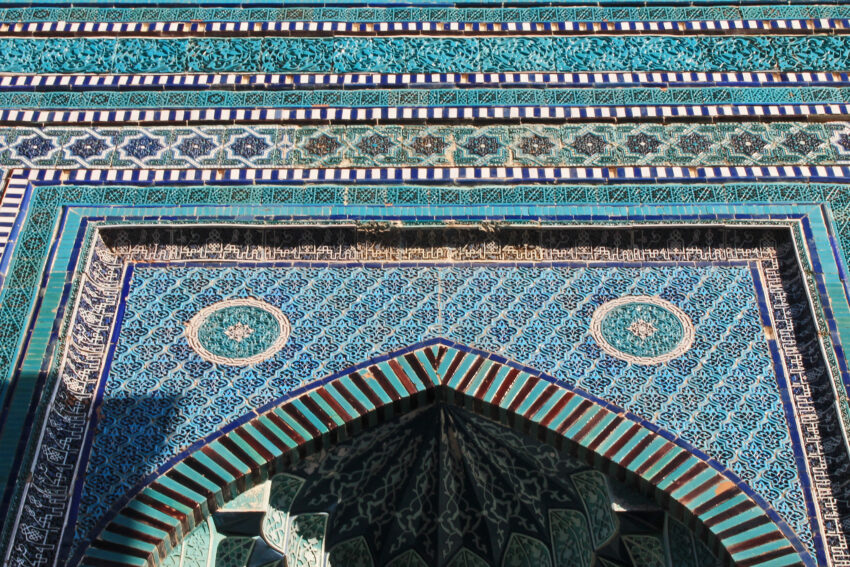
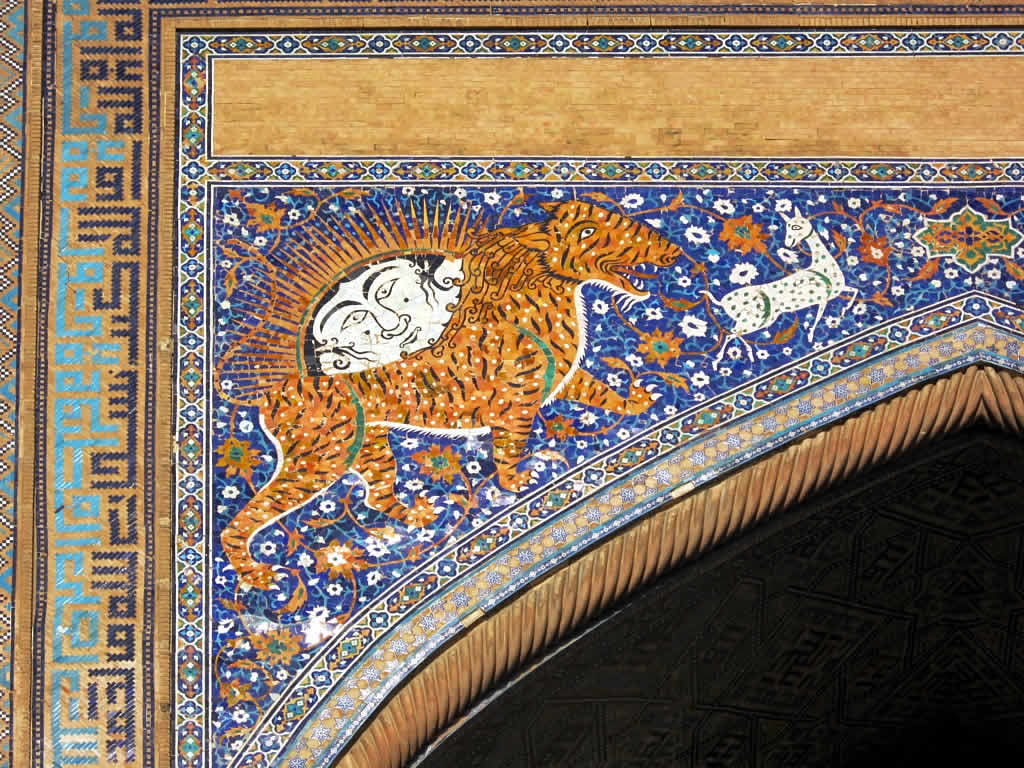
The Imposing Minarets
This building, as well as the Uleg Beg Madrasa, is flanked by the previously mentioned minarets. These were meant for decoration rather than their usual prayer site function, since both madrasas were used as colleges and not mosques. However, back in the day, public executions were also carried out in this place, throwing criminals in a sack from the top.
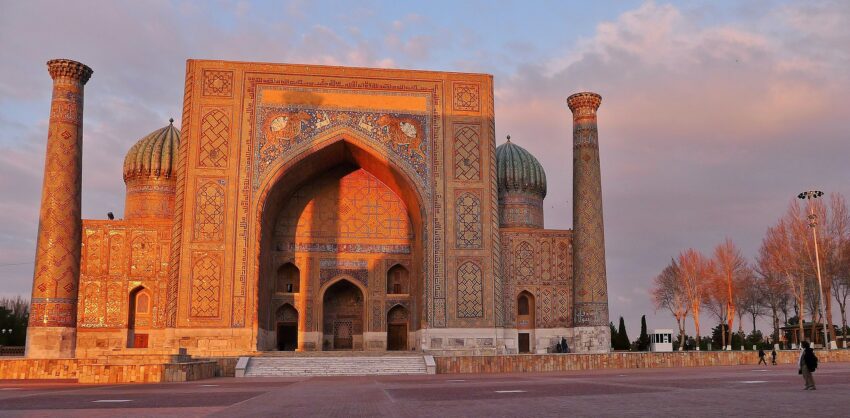
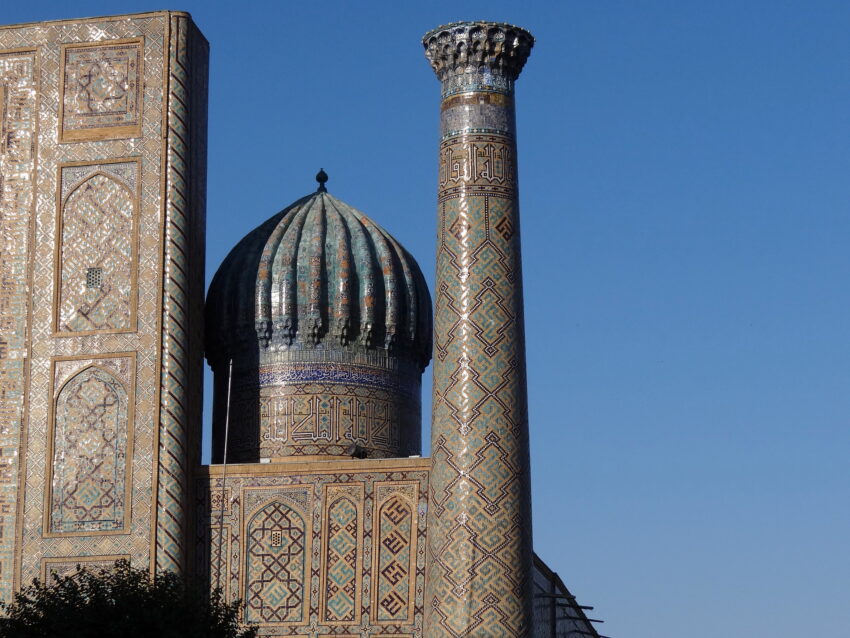
After you’ve taken the immense beauty of the Registan in, you can go up the north minaret of the Uleg Beg Madrasa. For just a couple of dollars, you can get an impressive vast view of both the square and the city.
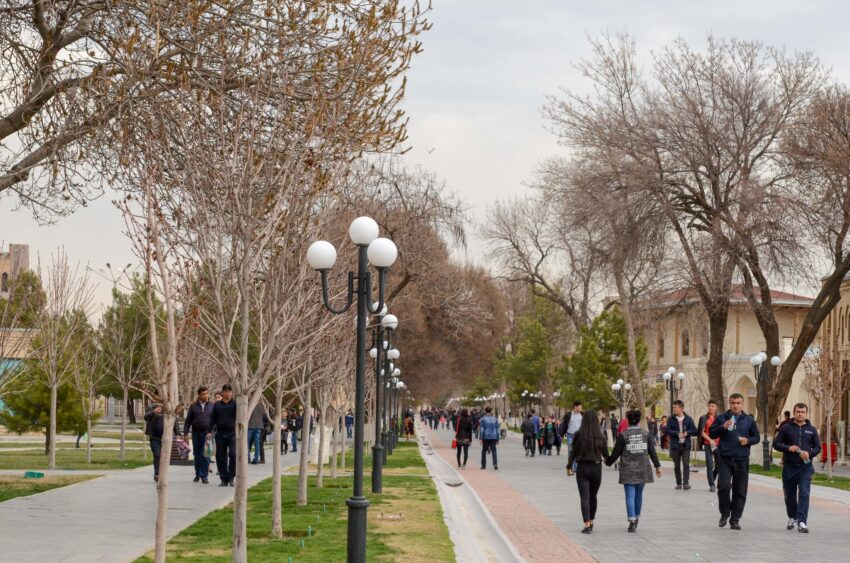
Samarkand Bazaar life
Now you’re ready to head to the nearby bazaar, where life and trade go on as it did back when the Silk Road, an old trading route that connected China and Europe through the Middle East, brought fabrics, gold, and spices. You’ll be able to buy accesories in here, along with different foods and exotic spices that date back to when gold was nothing compared to the value of saffron and black pepper.
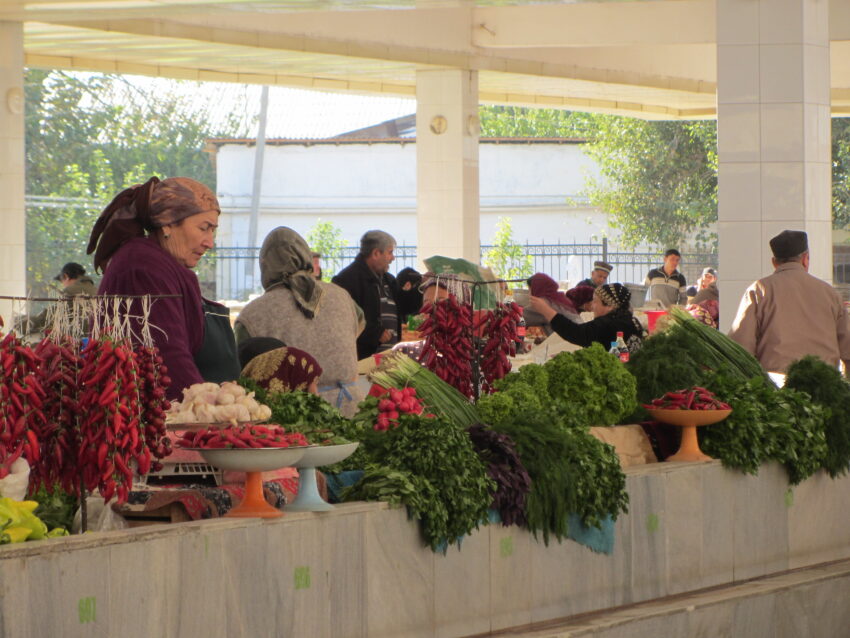
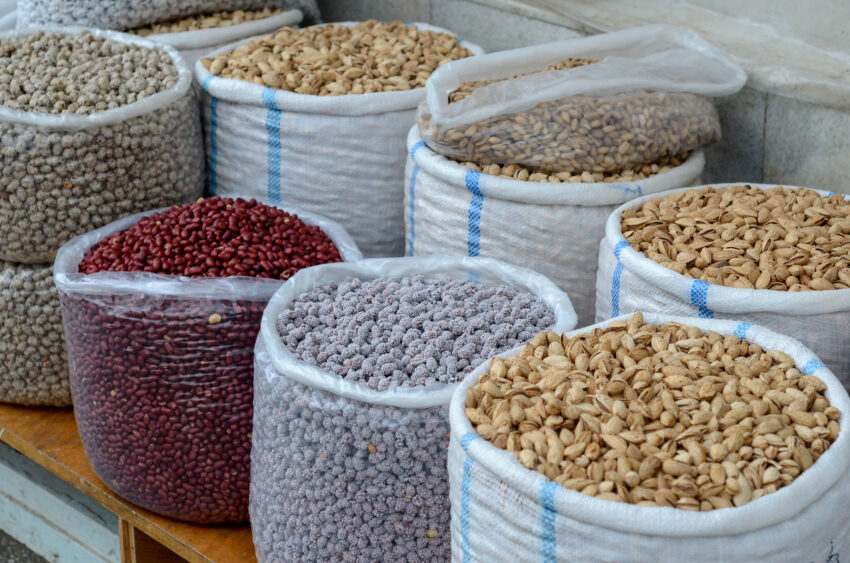
How to get there
Finally, you can take a bus, train or even a plane from the capital Tashkent to Samarkand. Many international airlines fly to Tashkent, since Uzbekistan Air has a modern fleet and good worldwide network. In addition, Samarkand has a good range of accommodation options, so you won’t have any trouble finding a good hotel. However, I recommend the four-star Hotel Presidential Palace.
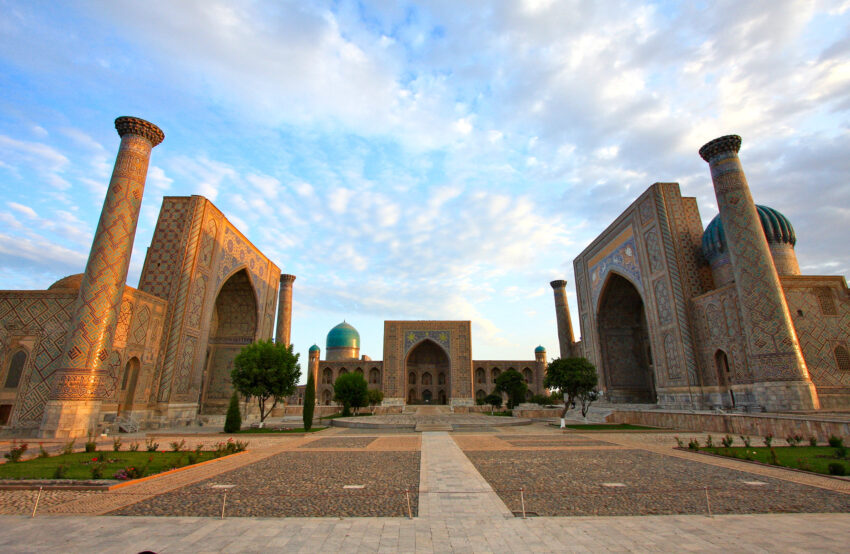
If you loved this article or found it useful, don’t forget to share it with your adventurous and travel-hacking friends! If you want more posts like this, follow us on Youtube, Instagram, Pinterest, Twitter or Facebook and subscribe to our newsletter!

